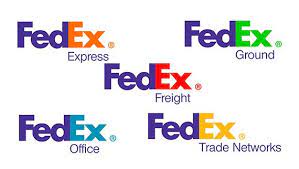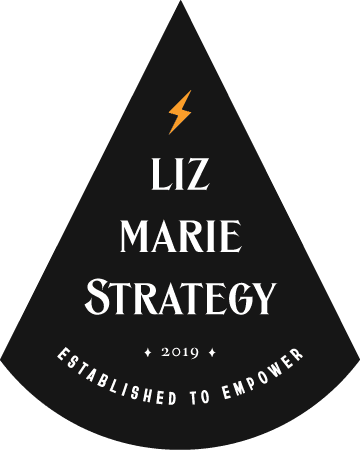Do you have multiple brands, and you’re not sure what to do with them or how to get them all organized in your head? Then, boy, have I got something for you!

So I get asked questions all the time from people with multiple brands who are unsure how to do exactly that. Whether it’s a parent company with some products, a personal brand and multiple businesses, or multiple businesses that are totally unrelated to each other. There are many different reasons why the situation would come up, and it can get really confusing. Most of the time, it comes up when they’re trying to figure out things like, what logos do I need? Do I need logos for all of them? Do I use the company name or the product name for my website or for my Instagram? Like, how do I talk about this?
It’s really common to be unclear if you have lots of different lines of business or your hands in a lot of different pots, which is pretty typical for an entrepreneur. Fortunately, there are some super clear structures that you can use to make sense of this and get clarity on your brand so that it makes sense to you and your customers.
So I wanna start by breaking down the examples I mentioned above and the branding issues they could run into:
Unrelated Business
A friend of mine has a web development company, a financial planning business, and wants to start a bar. They have nothing to do with each other, but they’re all her businesses. And so sometimes, she’s trying to figure out how to fit the pieces together. Are they related or not?
A Parent Company and its Products or Departments
Another example might be a company with a flagship product that has its own brand or following, and it could be difficult to determine which is the brand. Is it the product, or is it the parent company? And when do you talk about which?
Or you might have one company with several different departments or divisions that operate independently and need the ability to talk about themselves like they’re their own business.
Personal Brand, Company Name, or Both?
You may be trying to figure out should you be a personal brand using just your name or a company, or both? Check out my video on this exact topic!

All of these come down to an issue of “Brand Architecture.” Brand Architecture is a system – kind of like an org chart – that organizes brands, products, and services in a clear, simple way that is accessible to everyone in your company and your customers.
There are four different types of brand architecture.
#1 A Branded House
This has one “umbrella brand” or “parent brand” and then multiple products or services beneath it that all share the same name as the parent brand. This is a straightforward way to do it when starting because you’re really just focusing on building one brand with the same name.
Uber is an example of this. First, they started with just Uber, and now they have “Uber Eats” and “Uber Pool.” So while they have different services, they all begin with Uber but with different variations.
Another example is FedEx. There’s “FedEx Ground,” “FedEx Express,” all different lines of business that they have, but they’re all just variations of FedEx.



#2 Subbrands
Subbrands are probably the most common brand archetype. This is where you have the parent or “master” brand at the top, and then you have different “subbrands” beneath that are all connected or related to the parent brand.
The subbrands may have their own quality, branding, or brand name (so they don’t take on the name of the parent brand), but they’re all connected. This gives a lot more flexibility.
A perfect example of this is Apple. Apple is the parent or master brand, but beneath it, they have iPod, Aipod, MacBook, iPhone, etc. They have so many different products that essentially have their own brands to them, but they all fit together because they’re all related.
#3 Endorsed Brands
Endorsed brands are when you have products or services that are “endorsed” by their larger parent brand. This is a big advantage if you have one successful company and want to launch offshoots of that, but you want them to benefit from the parent company’s success.
A perfect example of this is Marriot hotels. They have their main line of business with the name of Marriot, but then they have several other types of hotels: Residence Inn, Fairfield, and Aloft which are their own brands, but all of their logos and branding say “by Mariot.” This instills the trust in the Marriot brand in those other brands, but it gives those other brands the flexibility to have their own identity. For example, Fairfield has a whole different vibe than Aloft, which is like young and modern and kind of edgy. So, those can still operate independently while still being part of the Marriot umbrella and getting all of that credibility and trust.
#4 A House of Brands
You are less likely to see this for a small business owner, but basically, it’s when you have a company that oversees a whole bunch of totally independent, unrelated brands.
P&G is a perfect example of this. They own TONS of brands like Gillette, Pampers, Febreeze, and Bounty. All of these personal care brands have their own identity, and you would probably never know that they are part of this P&G family, but they’re all owned by this master brand.
So, this could actually relate to an entrepreneur who has multiple lines of business. An example might be LeBron James (I have a whole video on Lebron’s brand!). He has the LeBron James personal old brand, which he’s known for; his merch, shoes, and clothing line; I Promise Schools; and his business ventures in which he’s an investor, like Blaze Pizza. These are all completely unrelated, but I would imagine they’re all connected to his main corporation or his main business structure, and they’re all part of the LeBron James master brand.

If you’re experiencing some of these challenges of trying to figure this out, chances are one of those approaches resonated most with you. Either way, there are a few things you want to be thinking about when you’re deciding which brand architecture type is for you.
Do these brands have different audiences?
Now, this doesn’t necessarily lend itself to one approach or another. Still, you just need to be mindful that if your subbrands or the brands you’re trying to connect have drastically different audiences, it may make sense to do something where they’re more separated, like the last two approaches.
Would you want the audiences to know about the other brands?
You can ask yourself, would you want those different audiences to know about the other brands? And that could be a yes or a no. Maybe there’s some advantage to them knowing about each other. So, for example, you would want an iPhone customer to know about an iPad because they may also buy that because those are related. Or, looking at the Uber example, someone who used Uber regularly could absolutely be an Uber Eats customer, so there’s no reason you wouldn’t them know about it.
However, there might be situations where that is a disadvantage. Let’s say, for example, you have a consulting business that’s really professional and buttoned-up, but you also started a cannabis brand. You may not want your consulting clients to know that you have this cannabis company because it may, you know, put your business at risk or change how they look at you; it can be somewhat controversial. So those are the things you wanna consider. Maybe you don’t want that crossover, or maybe you do. And that can be a factor in using the approach you go with.
The most important thing is that your brand architecture is clear and easy to understand.
Not only for you but also for your audience, so that when they engage with your brand, they know what they’re engaging with and can see the distinctions – if they are supposed to be distinctions.
I hope this has been helpful and taught you a bit about brand architecture and how to apply it to your brands. If you need a little bit more help, you can download my brand architecture worksheet to fill in the gaps for yourself.
Until next time, stay badass!
